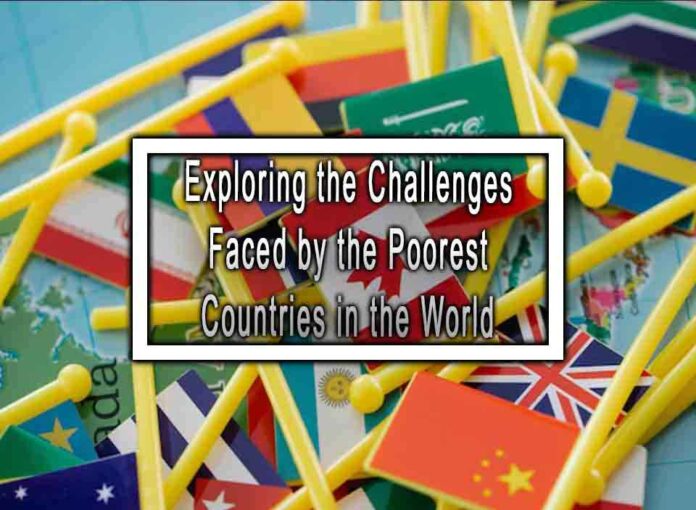The poorest countries in the world face numerous challenges that hinder their development and progress. These challenges are often interconnected and can be categorized into various areas:
1. Economic Challenges
– Limited resources and low productivity: Many of the poorest countries lack access to sufficient natural resources, technology, and infrastructure, leading to low productivity and limited economic growth.
– High levels of poverty and inequality: Poverty rates in these countries are often high, with a significant portion of the population living below the poverty line. Income inequality further exacerbates the economic disparities.

2. Political Challenges
– Political instability and conflict: Poor governance, political instability, and armed conflicts create an unfavorable environment for economic development and investments.
– Corruption and lack of transparency: Widespread corruption and a lack of transparent governance systems undermine economic growth and impede effective use of resources.
3. Social Challenges
– Limited access to education and healthcare: Many of the poorest countries struggle to provide quality education and healthcare services to their populations. This hinders human capital development and affects overall well-being.
– Food insecurity and malnutrition: Insufficient access to nutritious food and limited agricultural productivity contribute to high levels of malnutrition and food insecurity in these countries.
– Gender inequality and social exclusion: Women and marginalized groups often face discrimination and limited access to resources, education, and opportunities.
4. Environmental Challenges
– Climate change and natural disasters: Vulnerability to climate change, including extreme weather events and rising sea levels, disproportionately affects the poorest countries. These countries often lack the resources and infrastructure to adapt and recover from such challenges.
– Environmental degradation: Deforestation, soil erosion, and water scarcity are prevalent in many impoverished nations, leading to decreased agricultural productivity and further exacerbating poverty.
5. Access to Resources and Infrastructure
– Lack of basic infrastructure: Insufficient access to reliable transportation, energy, and communication infrastructure hampers economic development and connectivity.
– Limited access to clean water and sanitation: Many of the poorest countries struggle to provide clean water and sanitation facilities, leading to health issues and poor living conditions.
Addressing these challenges requires a comprehensive approach involving international cooperation, investment in human capital, infrastructure development, improved governance, sustainable economic policies, and targeted interventions to alleviate poverty and inequality. Efforts should focus on empowering local communities, promoting education, healthcare, and sustainable agriculture, and building resilience to environmental and economic shocks.










